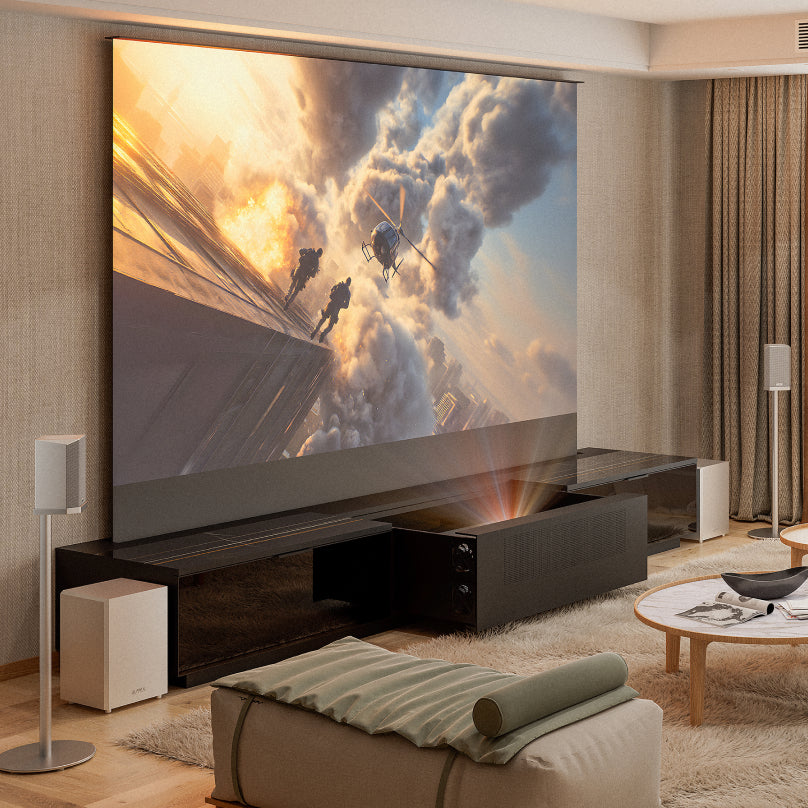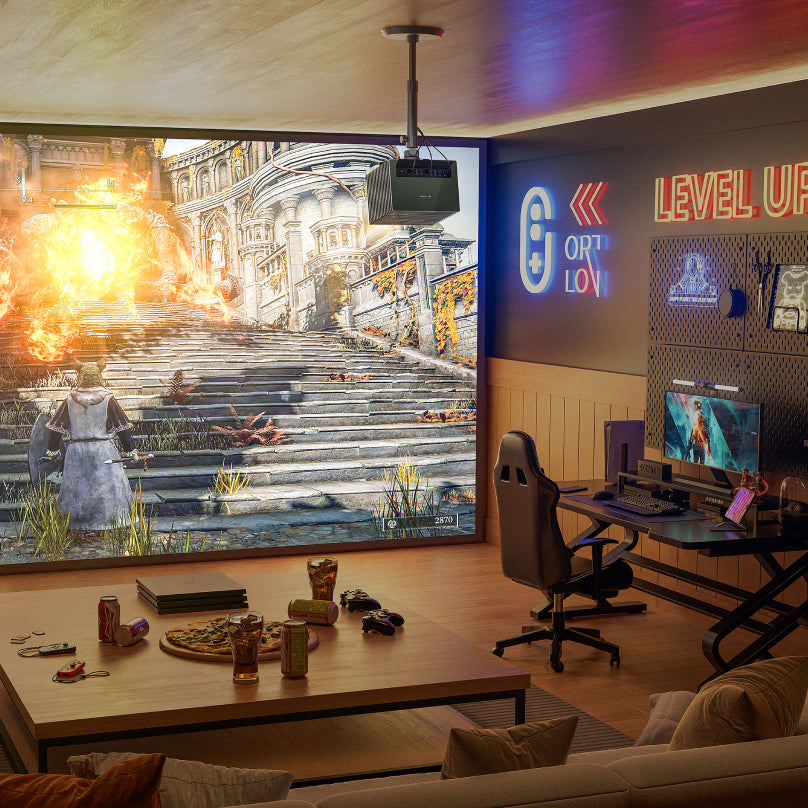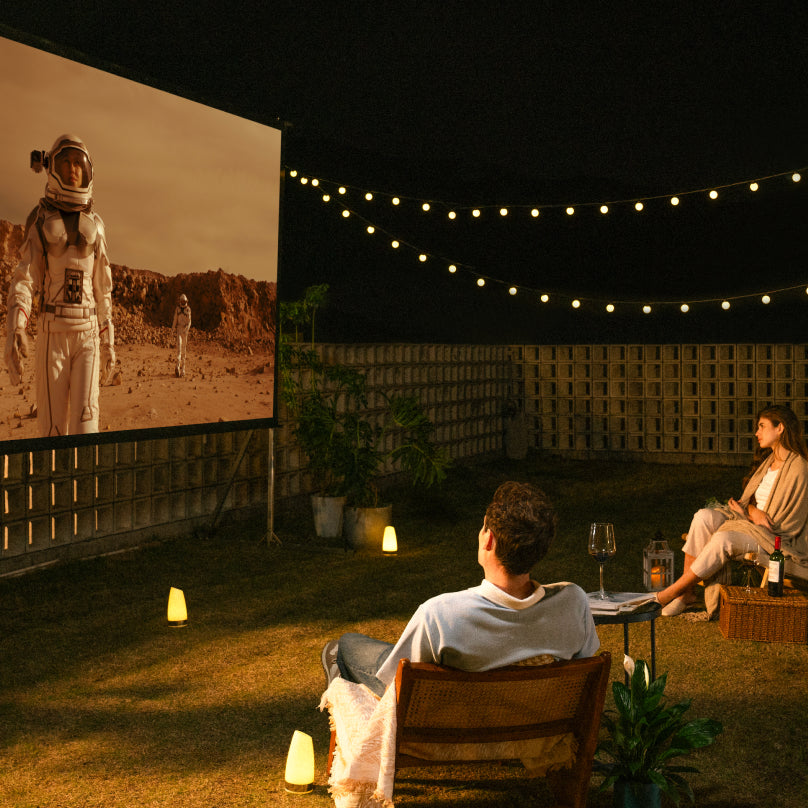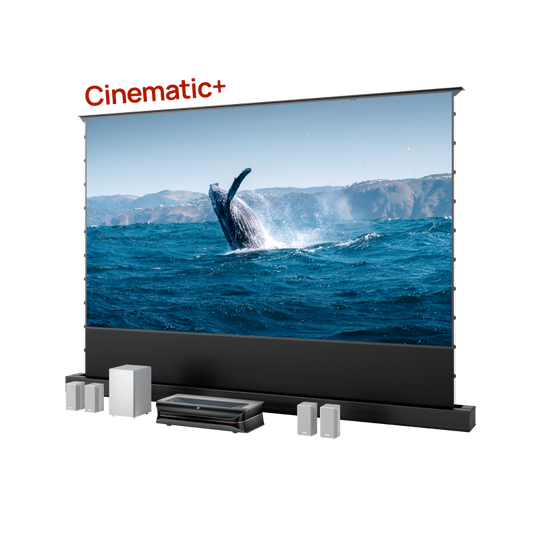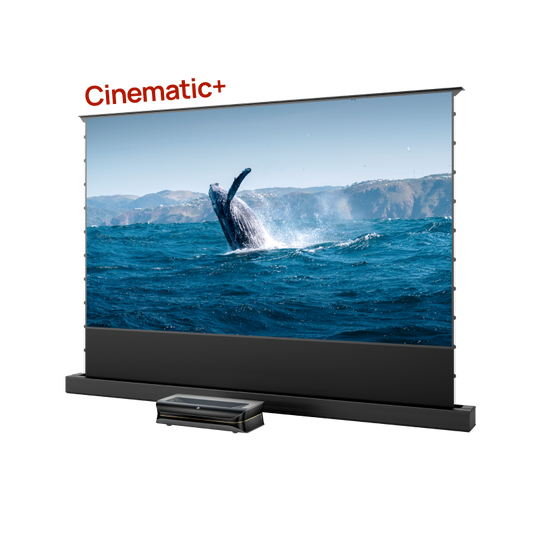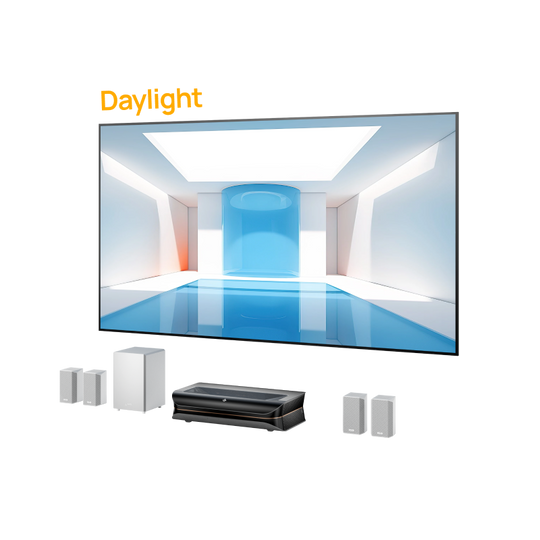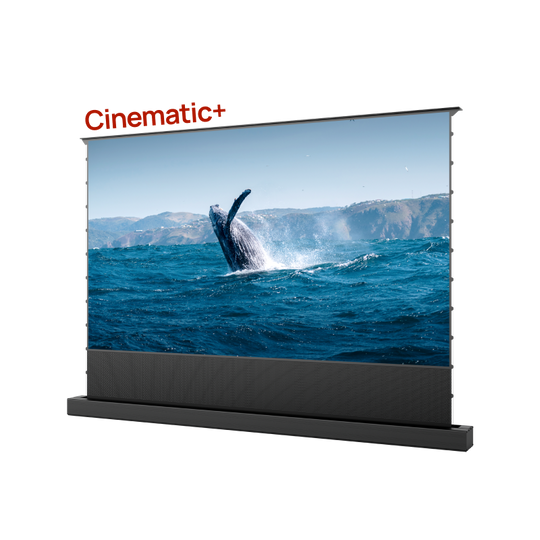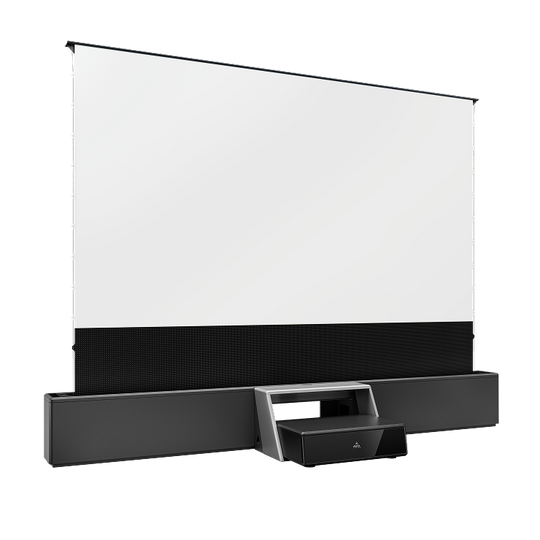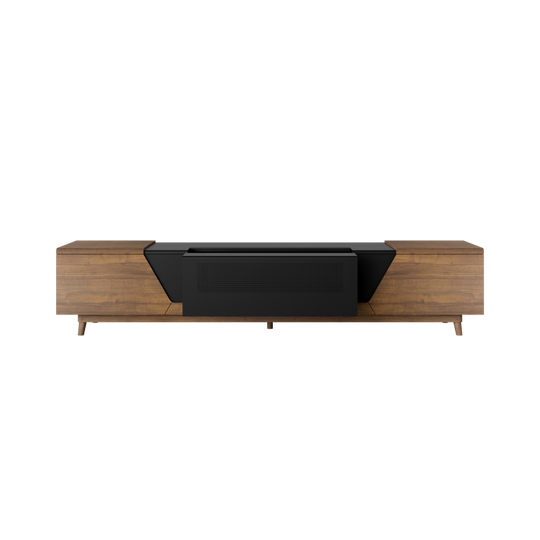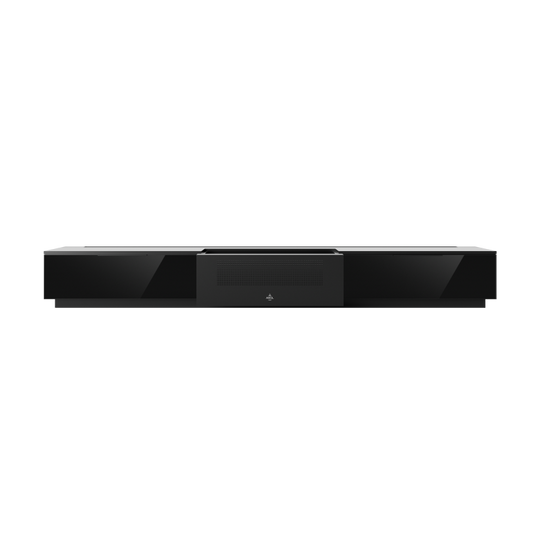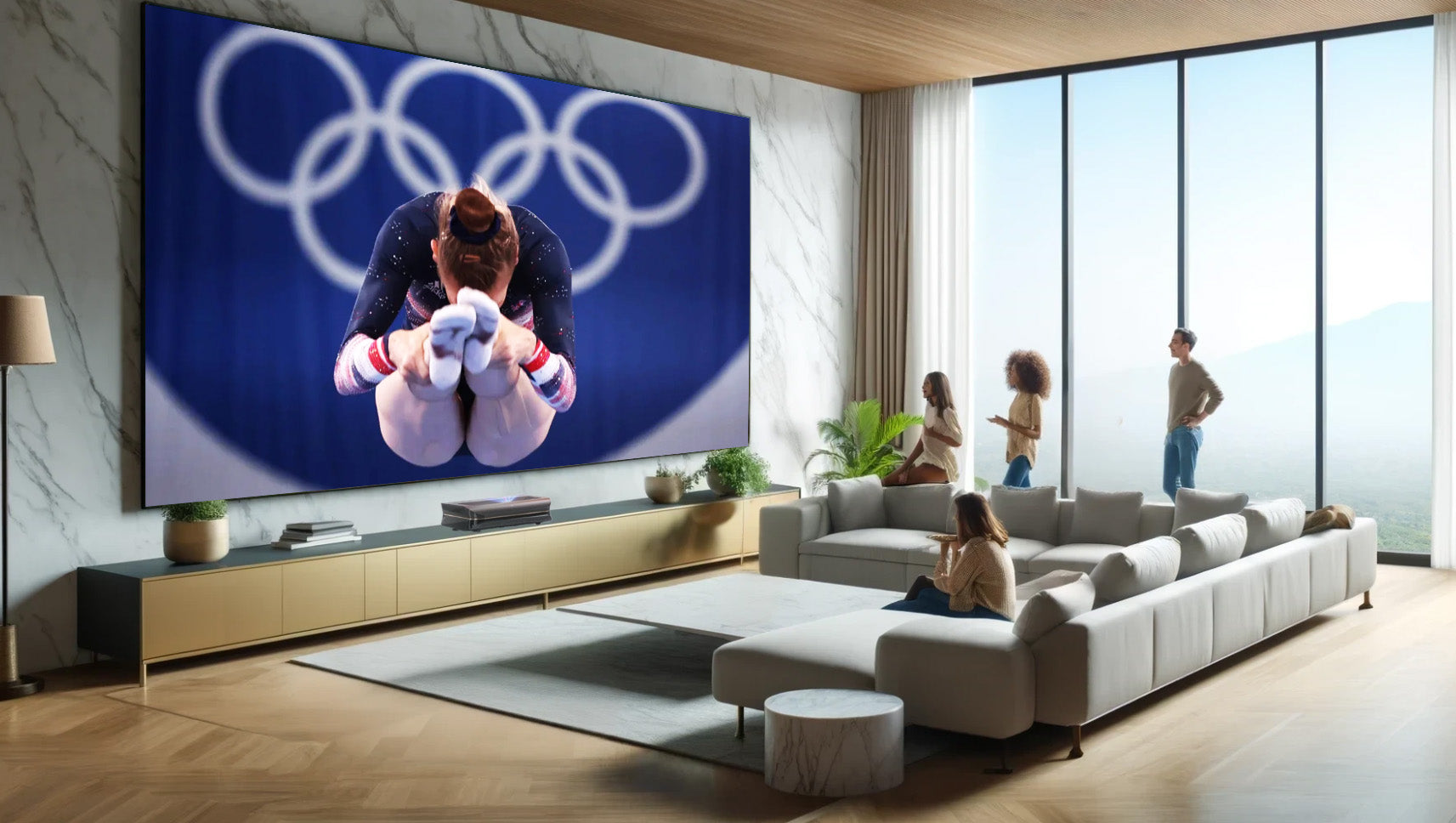If you are the lucky owner of an AWOL Vision laser TV projector, then you are sure to enjoy one of the most complete color palettes a display can reproduce today. Color is what makes our image vivid and appealing to our eyes. But how does our projector manage the colors in an image, and what tools does it provide us with to adjust its color behavior according to international standards or even our personal taste?
Rec.709 & Rec.2020 Color Spaces
Rec.709 is a color space standard that was developed for high-definition television (HDTV). It is often used in video production and broadcasting. Rec.709 defines the color gamut, white point and gamma curve for HDTVs.The most important features include:
Color gamut: Rec.709 covers approximately 35.9% of the CIE 1931 color space, providing a sufficient color palette for standard HDTV and SDR content.
White point: A D65 white point is used, which corresponds to a color temperature of 6500K.
Gamma curve: Usually set to a gamma value of 2.2, which ensures smooth gradation of colors.

Rec.2020, also known as BT.2020, is a newer color space standard developed for Ultra High Definition (UHD) and 4K/8K display devices. It significantly expands the color gamut compared to Rec.709. This color space is particularly important for High Dynamic Range (HDR) content, which requires a wider color spectrum and greater color depth. The most important features include:
Color gamut: Rec.2020 covers approximately 75.8% of the CIE 1931 color space, allowing for a much wider color palette.
White point: Also uses a D65 white point.
Gamma curve: Supports multiple gamma curves, including 2.2, 2.4 and Hybrid Log-Gamma (HLG).
Rec.709

Rec.2020

CMS – Color Management System
The Color Management System (CMS) in a Laser TV projector we can find it on the image settings menu and allows users to adjust the final color output to achieve the desired accuracy and preference. The CMS typically offers adjustments for hue, saturation and color brightness for both primary (red, green, blue) and secondary (cyan, magenta, yellow) colors.
Primary Colors
Red: Adjusting the hue of red can shift it towards yellow/orange or magenta. Saturation adjustments can make the red appear more intense or more subdued.
Green: Hue adjustments can shift green towards yellow or cyan. Saturation changes can make greens appear more lush or paler.
Blue: Hue changes can shift blue towards cyan or magenta. Saturation adjustments can make blues appear more deep or more washed out.
Secondary Colors
We call them secondary colors because there are not natural colors, are shades that come from mixing the three basic colors.
Cyan: Created by mixing green and blue. Adjusting the hue can shift cyan towards blue or green. Saturation adjustments affect its vividness.
Magenta: Created by mixing red and blue. Hue adjustments can shift it towards red or blue. Saturation changes impact its intensity.
Yellow: Created by mixing red and green. Adjusting the hue can shift yellow towards green or orange. Saturation changes can make yellows appear more vibrant or more subdued.
Understanding Hue, Saturation and Color Brightness
I will use the simplest way to make you understand those three color basic parameters on the CMS menu of your Laser TV projector.
Hue is the actually color, if the color seems green or red, or anything else to our eyes, this is hue.
Saturation on the other hand is how much “gray” there is inside the color. Saturation makes color more vivid or darker.
Color brightness is how much absolutely white there is inside that color. More white, more color brightness.
Calibrating the Colors on our Laser TV projector
Although professional calibration devices such as colorimeters or spectrophotometers provide the best results in terms of color accuracy, you can also achieve a reasonably well-calibrated display using your eyes and some standard images or calibration videos.
Our eyes are very sensitive to color nuances, so we can project an image that contains the primary or even secondary colors and make adjustments in the CMS menu of our projector to achieve the saturation and hue that satisfies us.
With hue, things are relatively simple as we can experiment with a primary color, such as red, to see where we can achieve the best hue for it.
By increasing or decreasing the hue in the CMS menu, we can change the red hue towards its neighboring colors, yellow and magenta.
decreasing red hue leads us to a magenta tint

increasing red hue leads us to an orange/yellow tint

a balanced red setting leads us to a physical red hue

Saturation is also used to set how intense the color should be. Be careful, because an intense color may be pleasing to the eye, but in reality, it leads to an exaggeration in the lower saturation areas if we overdo it by over-increasing the saturation.
over-saturated red

under-saturated red

The Brightness setting allows you to adjust the brightness of the color. This is perhaps the most difficult setting, as our eyes are not as sensitive to small changes in the brightness of a color as they are to changes in saturation or hue.


Ideally, none of these three settings (hue, saturation, brightness) should affect each other, i.e. if you change the values of one of these parameters, the other two should remain unchanged.
In practice, however, this is not the case and there is a slight change in the other parameters. It therefore makes sense to check the other parameters when making an adjustment to determine whether additional fine-tuning is required.
The AWOL Vision Laser TV projector comes well factory calibrated but now that you understand the color management system and its basic parameters, you can always make small adjustments to your liking. You can set the colors to match your eyes, your room and the content you are projecting.
AWOL Vision

